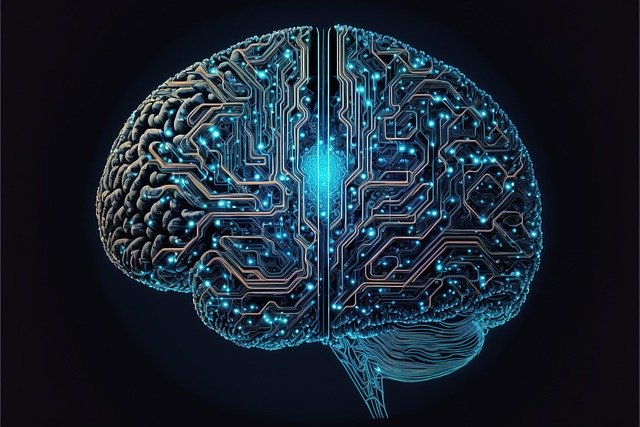In India, more people than ever before are receiving advanced prosthetic hands and limbs. But giving a device is only the first step. The real challenge is helping the brain and body learn how to use it.
This is where brain-friendly bionics come in. They are not just machines. They are tools designed to work with the way the brain learns. When prosthetic centers adapt their approach to include brain-based training, patients don’t just wear their devices—they use them with confidence and ease.
The good news? Indian centers can adopt these methods without needing expensive technology or massive investments. With the right mindset, simple tools, and structured routines, brain-friendly rehab can become part of everyday prosthetic care.
Let’s begin by understanding what brain-friendly bionics really mean—and why they matter for Indian patients.
What Makes a Prosthetic Brain-Friendly?
A Device That Works With the Brain, Not Against It
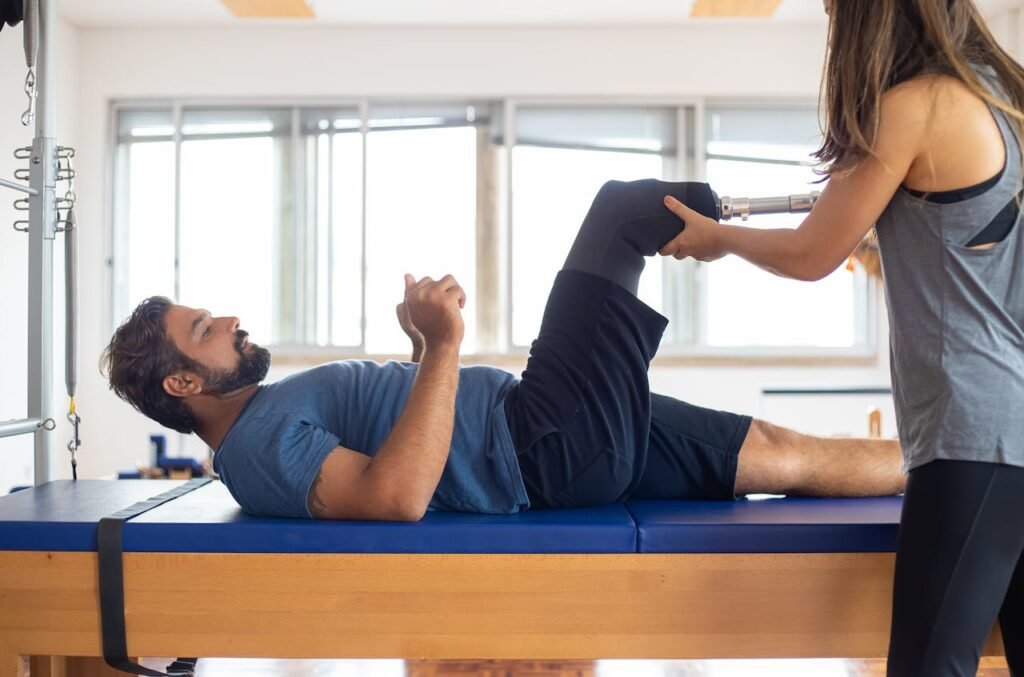
Most prosthetic devices are built for function. They open, close, or grip. But a brain-friendly prosthetic goes beyond mechanics. It is designed to listen to the brain’s natural signals and respond in a way that feels smooth.
Instead of forcing the patient to adjust endlessly, the device meets the brain halfway. This reduces frustration and speeds up learning.
Myoelectric Signals as the Foundation
Brain-friendly bionics often use myoelectric technology. This means the prosthetic responds to tiny electrical signals created by the muscles in the residual limb.
When the patient thinks about moving, the brain sends signals to the muscles. The prosthetic then picks these signals up and turns them into motion.
This connection helps the device feel more natural. It makes the prosthetic behave more like an extension of the body rather than an external tool.
Feedback That Guides the Brain
Another key part of brain-friendly design is feedback. Without feedback, the brain feels disconnected from the prosthetic.
Some devices, like our Grippy™ with Sense of Touch™, allow patients to “feel” pressure or contact. This feedback loop helps the brain trust the hand and refine control over time.
Even simple cues, like vibration or sound, can help the brain learn faster. What matters is that the patient gets real signals to guide their movement.
Easy to Use in Daily Life
A brain-friendly prosthetic isn’t only about advanced features. It must also be practical. If it’s too heavy, uncomfortable, or complicated, the brain resists using it.
The simpler the device feels in everyday life, the more often the patient will use it. And the more they use it, the more the brain adapts.
This balance between smart technology and everyday usability is what makes a prosthetic truly brain-friendly.
Why Indian Prosthetic Centers Need to Focus on the Brain
The Device Alone Is Not Enough
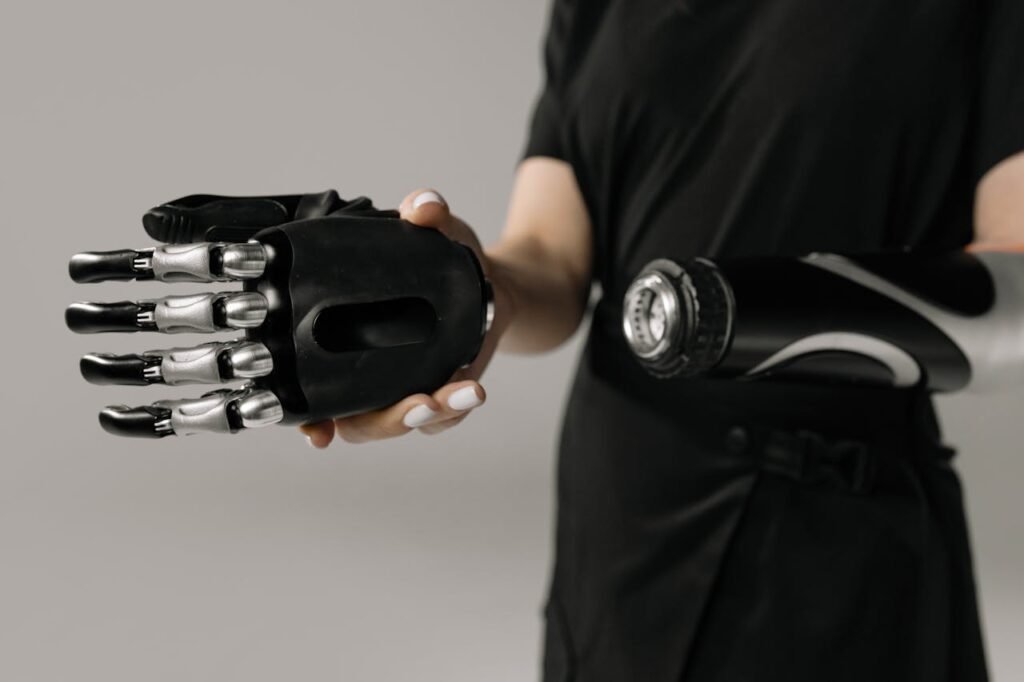
In many Indian centers, patients receive their prosthetic hand, learn the basics, and then leave. They may be told how to grip or open the hand but not how to train their brain to adapt.
Without brain-focused support, the patient struggles. The device feels foreign. Movements seem clumsy. Over time, many stop using the hand completely.
This isn’t a failure of the patient—or even the device. It’s a gap in how we approach rehab.
Neuroplasticity Decides Success
Neuroplasticity is the brain’s ability to rewire itself. Every new skill—from riding a bicycle to learning to write—depends on it.
For an amputee, neuroplasticity is what allows the brain to learn how to control a prosthetic. Each attempt builds new pathways, and each repetition makes them stronger.
If Indian prosthetic centers ignore this process, they risk leaving patients with devices their brains never truly accept.
Rural and Semi-Urban Patients Face Bigger Barriers
In rural India, the challenge is even greater. Many patients cannot travel often to the center. They may not have access to therapists or advanced rehab equipment.
Without simple, brain-friendly methods, these patients often abandon their devices quickly. The result is wasted investment and lost hope.
By focusing on brain-first rehab, centers can close this gap. Even simple routines and low-cost tools can keep the brain engaged.
Building Confidence Is as Important as Building Skill
When patients feel confident, they use their device more. But confidence doesn’t come only from successful movements. It comes from understanding what’s happening in the brain.
If a patient knows that clumsy, slow movements are part of the learning curve, they are more likely to keep trying.
Prosthetic centers that explain, encourage, and guide this process can turn early frustration into long-term success.
Steps Indian Centers Can Take to Introduce Brain-Friendly Rehab
Train Staff to Teach the Brain, Not Just the Hand
Most prosthetists and therapists are skilled at fitting devices and teaching basic functions. But brain-based rehab requires a shift in focus.
Staff should learn how neuroplasticity works, why repetition matters, and how to encourage patients when progress is slow.
Even a short training session or workshop can give them the language and confidence to explain brain adaptation clearly to patients.
Start With Small, Familiar Movements
When a patient first tries a bionic hand, don’t begin with complex exercises. Start with movements that feel natural—like gripping a tumbler, holding a spoon, or pressing two palms together.
The brain connects more quickly to tasks it already remembers. These familiar actions help the brain accept the prosthetic as useful, rather than foreign.
Once the patient gains confidence, you can introduce more complex, layered tasks.
Use Everyday Objects as Tools
Centers don’t need expensive rehab equipment. The best tools are already in the patient’s environment.
Plastic bottles, cloth towels, pencils, and cups can all be used to train grip, release, and rotation.
These objects are not only affordable—they also reflect real daily needs. Practicing with them helps patients carry their skills back home.
Make Sessions Short but Frequent
The brain learns best in small, repeated bursts. Long, exhausting sessions can lead to frustration and poor results.
Instead, focus on short sessions of 10–15 minutes, repeated multiple times a day if possible. This keeps the brain engaged without overwhelming it.
Encourage patients to continue small exercises at home so the learning doesn’t stop when they leave the center.
Track Progress in Simple Ways
Patients often feel like they are not improving, even when they are. This discourages them from continuing.
To solve this, track progress visually. Use a notebook, a wall chart, or even short video clips to show patients how their movements have improved over time.
Seeing their own progress builds motivation. It helps them believe the effort is paying off, even if the changes are small.
Making Brain-Friendly Rehab Affordable in Indian Centers
Focus on Mindset Before Machines

Many centers hesitate to introduce brain-focused rehab because they assume it requires costly technology. But the most important investment is not equipment—it’s mindset.
When staff understand that the brain is the key player, they begin to teach differently. They explain clearly, encourage consistently, and adjust training to focus on the brain’s needs.
This shift doesn’t cost money. It costs awareness. And once awareness is there, progress follows.
Build Low-Cost Rehab Kits
Instead of waiting for advanced tools, clinics can prepare simple kits with household objects. A small plastic bottle, a sponge ball, a steel tumbler, and a cloth towel are enough to create effective exercises.
These items are cheap, widely available, and easy for patients to use at home. More importantly, they connect rehab to real life, making practice meaningful.
Even a basic kit like this can transform training sessions into brain-friendly practice.
Use Mobile Phones for Feedback
Nearly every household in India has access to a smartphone. Clinics can use this simple tool for powerful results.
Patients can record themselves practicing and watch the video to see how their movements improve. They can share clips with their therapist for quick feedback, even if they live far away.
Families can also use the phone as a reminder tool—setting alarms for daily practice or using WhatsApp groups for accountability.
This is an affordable way to keep the brain engaged between clinic visits.
Create Group Sessions to Lower Costs
Instead of working with one patient at a time, clinics can organize small group sessions.
Patients can practice together, share stories, and encourage one another. This reduces the load on staff while giving patients a sense of community.
When patients see others struggling and improving, they feel less alone. This peer encouragement is priceless in building trust and confidence.
Partner With Local Innovators
India is full of startups and innovators designing affordable healthcare solutions. By partnering with local providers like RoboBionics, centers can access cost-effective bionic hands, muscle stimulators like BrawnBand, and gamified rehab apps.
These tools are designed to work in Indian conditions, with local patients, and within real budgets. Instead of importing expensive devices, centers can rely on homegrown solutions that balance quality with affordability.
Helping Patients Stay Consistent With Brain-Based Training
Explain the Journey Clearly
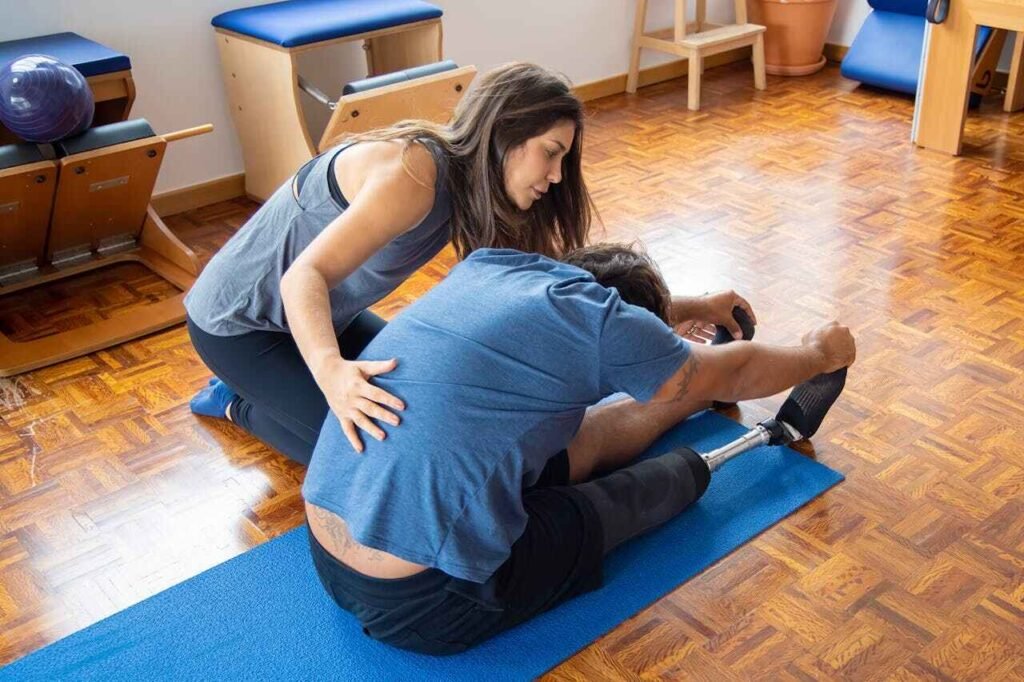
Many patients stop using their prosthetic because they don’t understand what to expect. They think the hand should work perfectly right away. When it doesn’t, they feel discouraged.
Clinics must explain upfront that the brain needs time. Tell patients: “In the beginning, it will feel strange. That’s normal. Each day you practice, your brain will learn more.”
This honesty prevents disappointment and keeps them motivated during the slower early weeks.
Celebrate Effort, Not Just Results
If patients feel success is only measured by perfect movement, they may give up quickly. But if effort is valued, they will continue trying.
Encourage staff to praise every attempt, even if the movement wasn’t smooth. Words like, “I see you’re working hard, and that’s progress” help patients feel safe to keep practicing.
This builds a learning mindset, where mistakes are seen as part of the journey, not proof of failure.
Connect Practice to Real-Life Goals
Abstract exercises can feel meaningless. But when practice connects to life goals, it becomes motivating.
For example, if a farmer wants to hold a sickle again, design tasks around gripping simple tools. If a student wants to write, make pencil practice part of rehab.
When patients see that every small step brings them closer to something meaningful, their brain engages more deeply—and their commitment grows stronger.
Involve Families in the Process
In Indian homes, family plays a central role in healing. But often, relatives unintentionally create pressure by saying things like, “Why can’t you do it yet?”
Teach families how to encourage gently. Show them how to guide practice without judgment. Give them simple instructions like, “Remind them to try, but don’t push too hard.”
When families become supportive partners, the patient feels less alone. This emotional safety makes the brain more willing to adapt.
Make Progress Visible
Sometimes patients don’t realize how far they’ve come. Clinics can use simple methods to make progress visible:
- Record a short video at the start and another after a few weeks.
- Use a chart to track the number of successful grips.
- Take a photo of them completing a new task.
Seeing this growth builds hope. And hope is what keeps patients showing up, day after day.
The Future of Brain-Friendly Bionics in Indian Centers
A Shift From Devices to Experiences
For years, prosthetic care has focused mainly on giving the device itself. But the future of prosthetics in India lies in combining technology with experience.
Brain-friendly bionics represent this shift. They are not just about function but about how naturally the brain and body accept the device. Indian centers that embrace this approach will see higher adoption rates and happier patients.
Technology Designed for Indian Realities
Imported prosthetics often cost more than ten lakh rupees and are not designed for the needs of Indian patients. Many are too expensive, fragile, or difficult to repair.
But India now has affordable, locally made solutions like RoboBionics’ Grippy™. Built with 60 out of 64 components sourced in India, it balances advanced features with accessibility.
When combined with simple neuroplasticity training, these devices give rural and urban patients alike a real chance at long-term success.
Digital Rehab Tools Will Play a Larger Role
With smartphones in nearly every household, digital rehab is becoming more practical. Apps that gamify training, provide feedback, and track daily use can keep patients engaged even far from clinics.
For Indian centers, adopting these tools doesn’t require massive infrastructure. A basic phone and internet connection are enough.
Over time, these digital aids will allow clinics to extend their reach to villages and semi-urban areas, where consistent therapy is often missing.
Partnerships Will Drive Scale
The future will also depend on partnerships. Prosthetic centers alone cannot handle awareness, training, and follow-up. Collaborations with NGOs, startups, and local health workers will be key.
When communities, clinics, and innovators work together, brain-friendly rehab can reach every corner of the country.
This ecosystem approach will make prosthetic use more sustainable, ensuring devices are not abandoned but fully embraced.
A Future Where Confidence Is Standard
In the years ahead, success will not be measured only by how many devices are fitted but by how confidently patients use them.
The centers that thrive will be the ones that treat every fitting as the beginning of a learning journey, not the end. They will see themselves as trainers of the brain as much as providers of the hand.
And when patients walk out not just with a prosthetic but with the belief that they can master it—the future of Indian prosthetic care will be transformed.
Strategic Steps for Prosthetic Centers to Scale Brain-Friendly Bionics
Invest in Patient Education as a Core Service
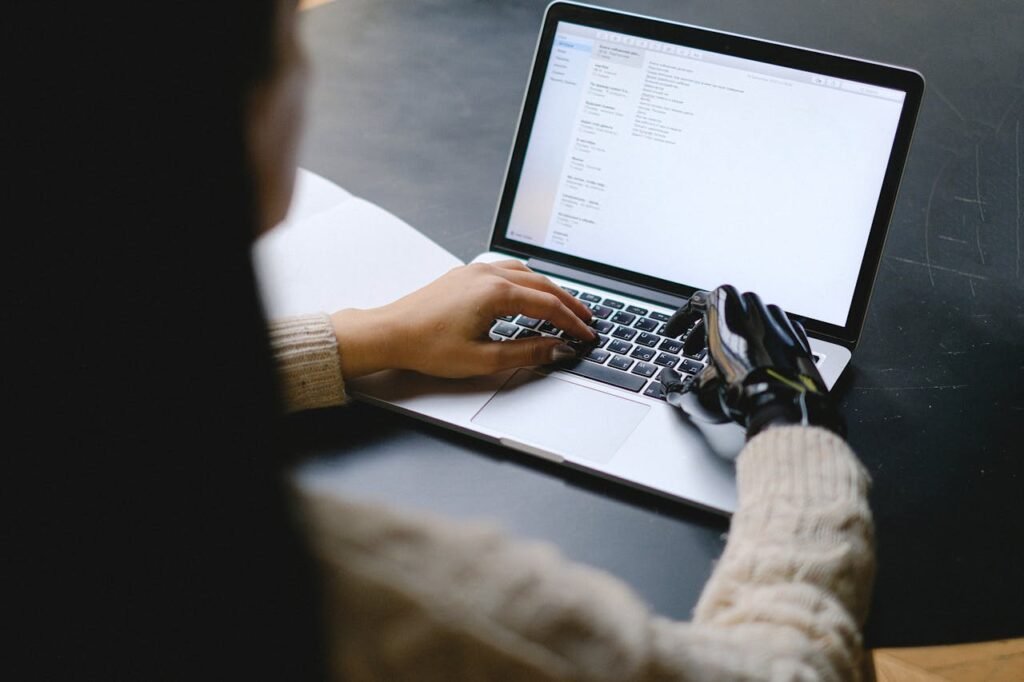
For prosthetic centers in India, education is not a “nice-to-have”—it is a strategic advantage. Most patients and families walk in with very little understanding of neuroplasticity. If you can explain it clearly, you immediately position your center as trustworthy and different from others.
Consider developing short orientation sessions, either in person or through simple video modules. These can be shown to every new patient and their family before they leave the clinic. This one-time investment in education will reduce dropouts, improve patient confidence, and increase word-of-mouth referrals.
When families understand the science behind brain-based rehab, they become partners in the process instead of passive observers. That partnership is what leads to long-term device adoption.
Turn Follow-Ups Into Relationship-Building Moments
Most prosthetic centers treat follow-ups as technical adjustments—fixing fit issues, tightening screws, or replacing parts. But in brain-friendly rehab, follow-ups are opportunities to strengthen relationships and improve patient retention.
During every follow-up, ask not only about the prosthetic but also about the patient’s experience:
- What tasks are they struggling with?
- How often are they practicing?
- What emotional challenges are they facing?
These conversations build trust and create loyalty. A patient who feels cared for will return to your center even when competitors offer cheaper options.
From a business perspective, strong follow-up processes also generate repeat service revenue, accessory sales, and referrals.
Offer Low-Cost Rehab Packages as Add-Ons
Instead of limiting your role to fitting prosthetics, expand your service line with affordable brain-based rehab packages. These could include:
- Weekly group practice sessions led by a therapist
- Access to gamified rehab tools through your center
- Printed or digital progress-tracking kits for families
Even a small, structured add-on can differentiate your clinic in the market. Families are more likely to choose a provider that doesn’t just sell a device but supports the full journey.
By pricing these packages affordably, you can increase accessibility for rural and semi-urban patients while creating a steady revenue stream for your business.
Partner With Schools, NGOs, and Local Health Programs
Many amputees in rural India don’t even know brain-based rehab exists. By building partnerships with schools, NGOs, and government health programs, prosthetic centers can reach far more people.
For example, you could run awareness workshops for local ASHA workers, provide demo sessions at community health camps, or collaborate with NGOs that already work with disabled communities.
These partnerships don’t just expand your patient base—they also build credibility. When a trusted community leader endorses your services, adoption rates increase significantly.
Leverage Digital Platforms for Scalability
While rural patients may not always visit frequently, many have access to smartphones. This creates a powerful opportunity for prosthetic centers.
Develop simple WhatsApp-based check-in programs, where patients send weekly updates or short practice videos. Create YouTube tutorials in regional languages to guide families through home exercises. Even a monthly SMS reminder can keep patients engaged.
By using digital platforms strategically, you extend your reach far beyond the walls of your clinic—without adding significant costs. This not only improves patient outcomes but also enhances your brand reputation as a modern, supportive provider.
Conclusion: Building Brain-Friendly Prosthetic Care in India
The Brain Is the Real Key
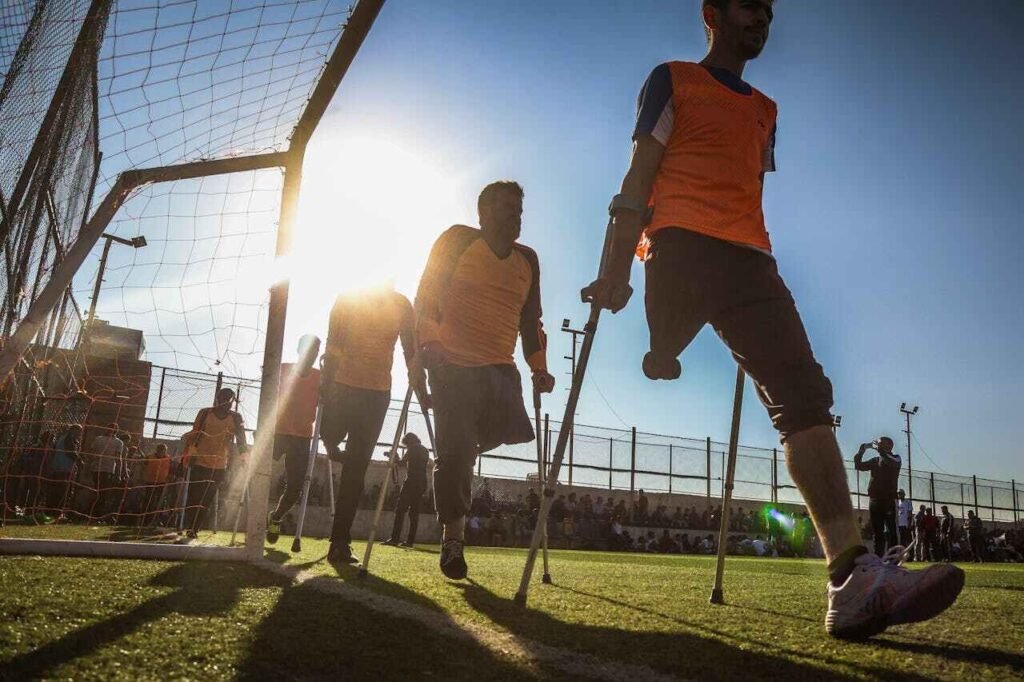
Every prosthetic fitting is more than a technical process. It is a conversation with the brain. If the brain learns, adapts, and trusts the device, the patient succeeds. If the brain struggles, even the best technology will fail.
This is why brain-friendly bionics are the future of prosthetic care in India. They make the patient’s brain an active partner in recovery, not a silent observer.
Small Changes Create Lasting Impact
The beauty of this approach is that it doesn’t demand expensive equipment or advanced labs. It requires awareness, patience, and simple, consistent routines.
Every center can start today—by explaining neuroplasticity to patients, using household objects for practice, tracking small wins, and involving families in the process.
These steps, while small, build confidence. They prevent devices from being abandoned. And they give patients a fair chance at independence.
India Can Lead the Way
With affordable, locally built solutions like RoboBionics’ Grippy™, and with a growing awareness of brain-based rehab, India is uniquely positioned to lead the world in accessible prosthetic care.
Our communities are strong. Our families are supportive. Our clinics are resourceful. By focusing on the brain as much as the body, we can turn these strengths into life-changing outcomes for amputees.
A Call to Action
If you are part of a prosthetic center, a rehabilitation clinic, or even a local health network—now is the time to act. Introduce brain-first methods into your daily practice. Teach your patients that every attempt counts. Show them that their brain is learning, even when progress feels slow.
At RoboBionics, we are here to support you. With our prosthetics, rehab tools, and gamified training apps, we help Indian centers do more—with less.
Together, we can make sure no prosthetic is left unused, no patient feels defeated, and no brain is left behind. Book a free demo with RoboBionics today.



